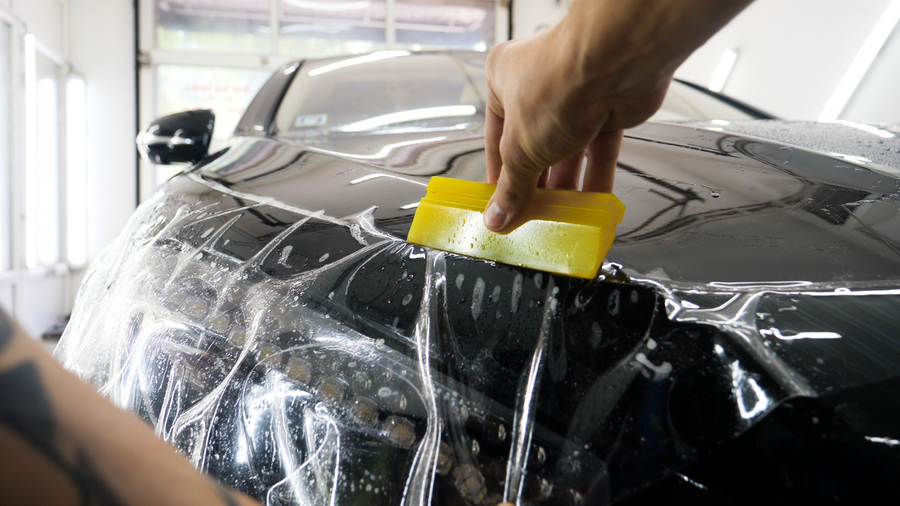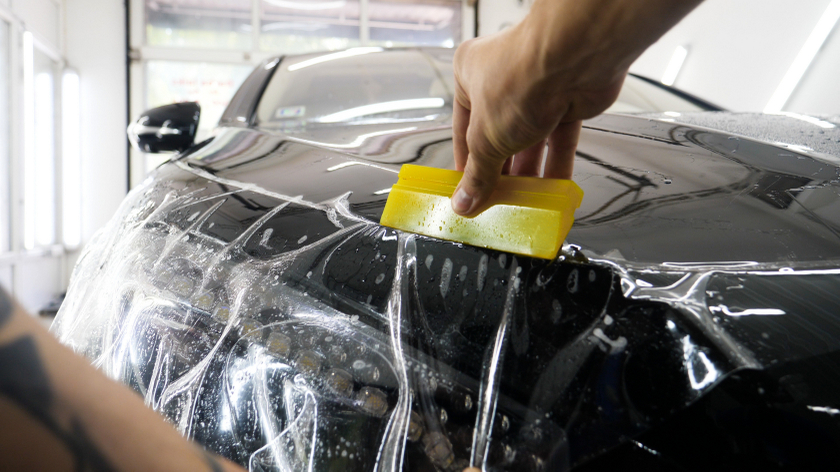Inspiration
Be inspired by learning about new ways in which you can support and drive your business forward by keeping up to date with the latest news and blogs from William Smith.

When it comes to achieving a flawless PPF installation, attention to detail and adherence to industry best practices are paramount. As a professional in the field, it is essential to be aware of the most common mistakes that can compromise the quality of the installation and ultimately the client's satisfaction. Today, we’ll explore the top seven mistakes often encountered during PPF installations and discuss how to avoid them. By understanding and implementing these tips, you can elevate your PPF installations to provide impeccable results for your clients.
1. Not Having a Clean Environment
One of the foundational aspects of a successful PPF installation is a clean environment. Having a separate room or bay dedicated to PPF installation, complete with a low ceiling, proper lighting, and a dirt-minimising floor finish, is crucial. Equally important is maintaining personal cleanliness by wearing appropriate attire and using gloves. By prioritising cleanliness, you can minimise dust and contaminants, ensuring a superior finish that will impress your clients.
2. Not Preparing the Surface Correctly
The quality of surface preparation directly correlates with the final outcome of the PPF installation. Take the time to meticulously clean the car's surface, leaving no room for any traces of dirt, dust, or other particles. It is essential to avoid painting adjacent parts like wheels, windows, or plastic grills, as this can lead to unwanted dirt transferring under the PPF film. Dedicate sufficient time to this preparatory step to ensure a flawless and durable bond between the PPF and the car's surface.
3. Detailing Every Car Before PPF
While some vehicles may require extensive pre-PPF detailing, it is essential to strike a balance. PPF has the remarkable ability to hide small paint imperfections, removing the need for excessive detailing in many cases. Carefully consider each vehicle's specific requirements before committing extra time for detailing. This allows you to be more efficient without compromising the integrity of the finished PPF installation.

4. Being Impatient During Installation
The installation of PPF demands patience. Rushing through the process to save time can lead to avoidable mistakes. Understanding that a full PPF installation can take anywhere from 3 to 7 days, depending on the vehicle's size and complexity, is crucial. Allow yourself the necessary time to ensure each stroke of the squeegee is performed meticulously, leaving no residue or trapped air behind. Remember, patience is a virtue that will deliver a final product that exceeds expectations.
5. Not Aligning Patterns Correctly
Today's PPF patterns are designed to fit precisely on the vehicle panels. Hence, it is crucial to pay meticulous attention to aligning the patterns correctly. Avoid accepting uneven gaps that suggest a lack of attention to detail. Instead, take the time to align each pattern with precision, ensuring a seamless appearance and demonstrating your dedication to delivering outstanding results.
6. Stretching in the Wrong Areas
Stretching PPF film is an art that requires skill and expertise. Each panel may require a different degree of stretch, and using the appropriate technique is vital. Avoid employing improper vinyl wrap-style stretching methods, as they can lead to various issues, including problems during application and a compromised finish. By mastering proper stretching techniques, you can achieve a flawless PPF installation that will stand the test of time.
7. Treating PPF as a Vinyl Wrap
It’s essential to understand that PPF and vinyl wrap materials are fundamentally different. Attempting to cover panels fully, as one might do with vinyl wrap, is not feasible with PPF. Instead, aim to finish the film just before the edge of the panel, typically before the tip of the bevelled edge. Overextending the coverage can lead to future failures. By respecting industry standards and avoiding an overly heroic approach, you can ensure a PPF installation that will maintain its quality and durability for years to come.
Avoiding these common mistakes in PPF installation is pivotal to providing exceptional results for your clients. By following these tips and tricks, you can elevate your expertise as a PPF installer. With each installation, you have the opportunity to impress your clients with a flawless and long-lasting PPF finish that provides the optimal protection they seek for their vehicles.
If you found this useful and would benefit from further PPF training, contact our Training Coordinator at sam@williamsmith.co.uk to find out about upcoming course dates and availability.